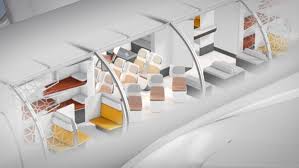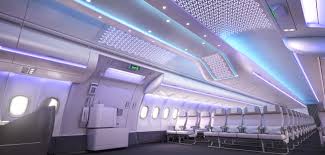 Q – Really love this site but one criticism. You deal a lot with things as they are – not as they might be. As an architect and designer specializing in modular housing, I am intrigued by the potential of the airline industry to develop aircraft that has seating that can be easily converted in minutes to a totally new configuration. Let’s say, for instance, tight seating when a flight is less than two hours but when the next segment is longer the seating changes as new seats are easily placed on a track. Is anyone actually working on this? I’m really curious. Keep up the good work.
Q – Really love this site but one criticism. You deal a lot with things as they are – not as they might be. As an architect and designer specializing in modular housing, I am intrigued by the potential of the airline industry to develop aircraft that has seating that can be easily converted in minutes to a totally new configuration. Let’s say, for instance, tight seating when a flight is less than two hours but when the next segment is longer the seating changes as new seats are easily placed on a track. Is anyone actually working on this? I’m really curious. Keep up the good work.
A – It might be fun to get some architect friends and futurists together to do a web site focused on what could be given our current abilities to utilize technology-driven. You would just have to remember that everything in the Airline sector is driven by profit per seat per mile. Passenger comfort is never the prime motivator for design.
 Actually, Airbus has been working on a new modular system that can transform an aircraft from high-density seating to luxury with lounges and stand-up bars in the time it takes to do a normal turn–around. This project was being run out of Airbus’ innovation lab called A3 but they have now gone public with the project and named it ‘transpose”. The goal is to essentially change a re-design of the seating and interior layout on an aircraft, a process that normally takes three weeks on average, to allow completion within a half hour. This can be achieved by using modular everything and simply sliding out and sliding in seating and other materials . It would be similar to swapping out cargo in the hold – a process that already exists. The exciting this about this project is that it does not require the design of new aircraft. The designs are being developed to use existing aircraft. This project is currently thought to be anywhere from five to ten years away from final application. But we are skeptical. It will cost a great deal and we’re not sure it will greatly enhance revenue since most current seating plans are already designed for near-maximum capacity goals.
Actually, Airbus has been working on a new modular system that can transform an aircraft from high-density seating to luxury with lounges and stand-up bars in the time it takes to do a normal turn–around. This project was being run out of Airbus’ innovation lab called A3 but they have now gone public with the project and named it ‘transpose”. The goal is to essentially change a re-design of the seating and interior layout on an aircraft, a process that normally takes three weeks on average, to allow completion within a half hour. This can be achieved by using modular everything and simply sliding out and sliding in seating and other materials . It would be similar to swapping out cargo in the hold – a process that already exists. The exciting this about this project is that it does not require the design of new aircraft. The designs are being developed to use existing aircraft. This project is currently thought to be anywhere from five to ten years away from final application. But we are skeptical. It will cost a great deal and we’re not sure it will greatly enhance revenue since most current seating plans are already designed for near-maximum capacity goals.
